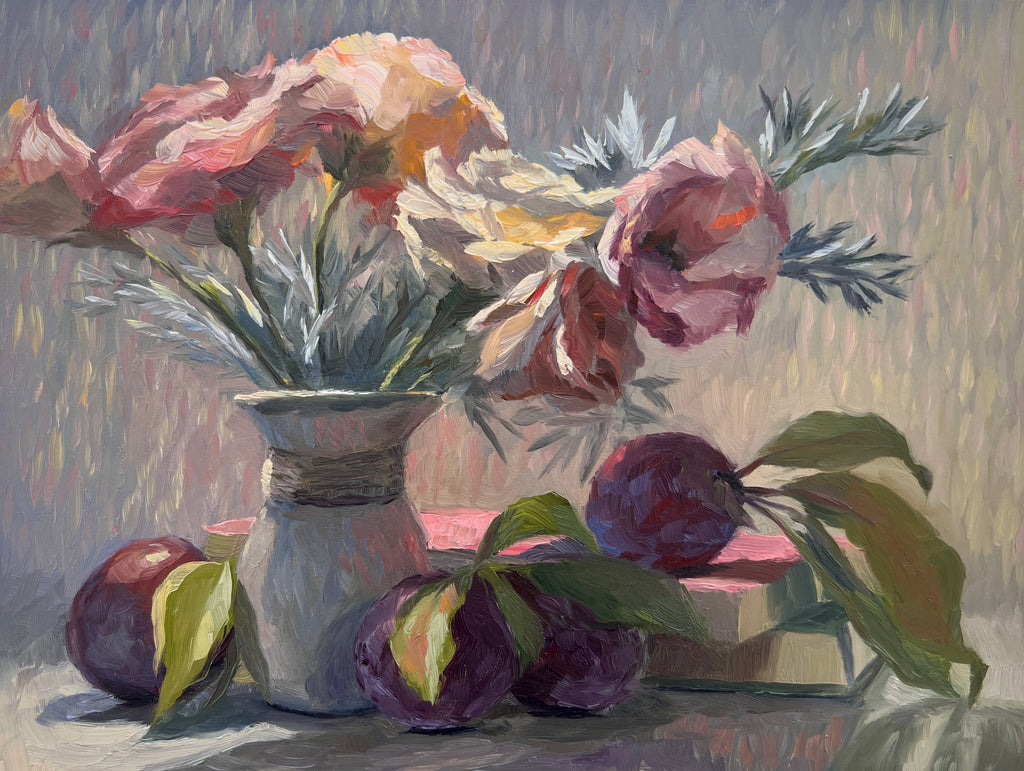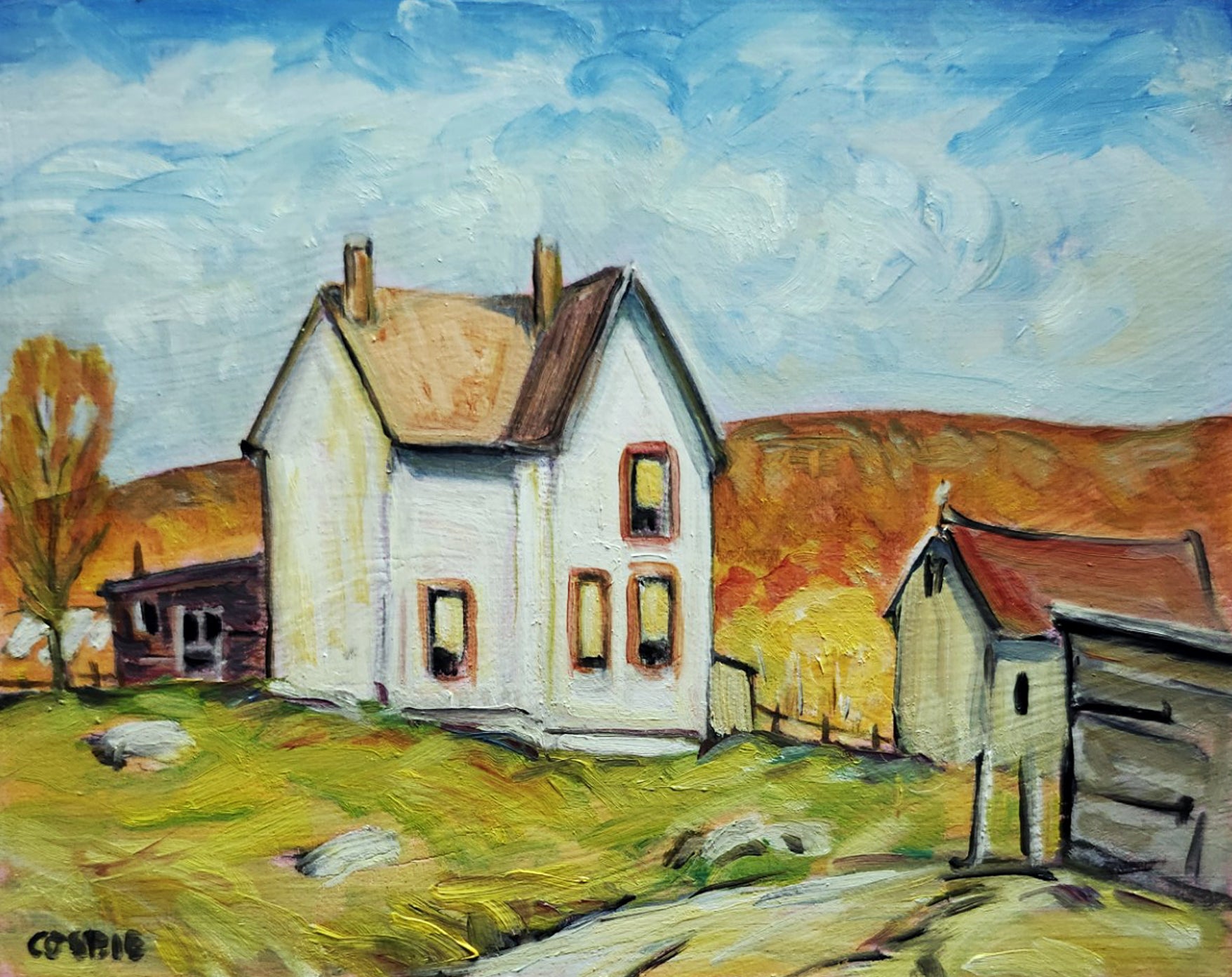Beautiful Handcrafted Oil Paintings for Sale from Ateliers
Beautiful Handcrafted Oil Paintings for Sale from Ateliers
Blog Article
Checking out Everything About Oil Paintings: An Overview to Recognizing Their Elegance and Worth
Oil paintings have astounded audiences for centuries, offering a glimpse right into the artistic proficiency of numerous periods. Their abundant background is intertwined with cutting-edge methods and profound psychological expression. Recognizing the products and methods behind these art work can improve recognition. Furthermore, the market for oil paints offers chances for financiers and enthusiasts alike. As one discovers this remarkable globe, the question arises: what makes an oil paint genuinely important?
The History of Oil Paint: A Journey Through Time
Oil paint has roots that date back to ancient times, it genuinely grew during the Renaissance, when musicians discovered its adaptability and abundant color possibility. Early examples can be mapped to the 7th century, with methods evolving especially across societies. The medium became noticeable in Northern Europe in the 15th century, particularly through the works of musicians like Jan van Eyck, who originated its use for in-depth realism and vivid hues. This duration noted a departure from tempera paints, permitting for higher deepness and appearance. As oil painting spread, it affected many musicians, leading to work of arts by renowned numbers such as Leonardo da Vinci and Rembrandt. The medium's legacy proceeds, shaping the art world well right into modern times.
Comprehending Oil Paints: Materials and Techniques
As artists explore the world of oil paints, they come across a varied variety of materials and methods that define this tool. The main components of oil paint consist of pigments, which supply shade, and drying out oils, such as linseed, that bind the pigments and assist in application. Different ingredients can change the paint's texture and drying out time, improving convenience. Strategies like glazing, where clear layers are developed, and impasto, which entails applying thick paint, permit for different aesthetic results. Additionally, making use of brushes, palette knives, and even fingers can develop special structures and coatings. Recognizing these techniques and materials enables artists to totally reveal their creativity and accomplish the desired effect in their artwork.
The Function of Shade in Oil Paintings
Shade plays a pivotal function in oil paintings, influencing both visual allure and emotional vibration. Comprehending color concept basics, consisting of the partnerships in between shades, can improve a musician's capability to convey mood and environment. Additionally, understanding shade blending methods enables better depth and richness in a painting's combination.

Shade Concept Essential
Comprehending shade theory is essential for artists collaborating with oil paints, as it creates the structure for developing harmonious and visually appealing structures. Shade theory incorporates the research of exactly how colors communicate, the color wheel, and the partnerships in between key, secondary, and tertiary shades. Artists use corresponding shades to boost contrasts and create focal points, while comparable shades advertise unity and cohesiveness within an item. Furthermore, the concepts of awesome and cozy shades influence the understanding of depth and space in a painting. Understanding these concepts permits artists to manipulate shade successfully, directing the viewer's eye and communicating their designated message. Proficiency of shade theory ultimately enriches an artist's ability to convey emotions and ideas via their work.
Psychological Influence of Shade
The emotional effect of color in oil paints plays an essential duty in exactly how customers view and connect with art work. Colors evoke particular feelings and state of minds, affecting the viewer's mood. For example, warm tones like oranges and reds can develop a sense of warmth and power, while trendy tones such as blues and environment-friendlies usually stimulate calmness or introspection. Artists tactically select color combinations to improve narrative aspects, directing the target market's emotional trip. The saturation and contrast of shades additionally amplify these effects, attracting attention and producing focus. Inevitably, the interplay of shades in oil paints not just enhances their aesthetic charm yet additionally offers as a powerful medium for psychological expression, improving the visitor's experience and interpretation.
Shade Mixing Techniques
While several facets of oil painting add to the general structure, mastering color blending strategies is vital for attaining preferred results and depth. Shade mixing can be approached with various approaches, including the subtractive and additive processes. Additive blending involves combining colors of light, while subtractive blending relies upon pigments, where colors mix to develop brand-new tones. Artists often make use of a restricted scheme to produce harmonious works, recognizing the partnerships between primary, secondary, and tertiary colors. Methods such as glazing and scumbling additionally improve deepness and brightness. By masterfully mixing colors, an artist can evoke feelings, produce focal points, and achieve a feeling of realism, inevitably elevating the paint's visual and emotional influence.
Famous Oil Painters and Their Iconic Functions

Well known for their proficiency of shade and method, oil painters have developed a few of one of the most celebrated artworks in background. Renowned artists like Vincent van Gogh mesmerized target markets with his stirring brushwork in "Starry Night," while Claude Monet's "Impression, Sunup" prepared for Impressionism. Leonardo da Vinci's "Mona Lisa" remains an enduring icon of imaginative wizard, showcasing his ability in capturing human expression. Rembrandt's "The Evening Watch" highlights his cutting-edge use of light and shadow. Various other noteworthy figures consist of Pablo Picasso, who changed modern-day art with his strong experimentation in jobs like "Les Demoiselles d'Avignon," and Georgia O'Keeffe, whose vivid representations of blossoms and landscapes aided specify American get more info innovation. Each artist's one-of-a-kind style added substantially to the oil paint landscape.
How to Evaluate the Quality of an Oil Painting
Evaluating the top quality of an oil paint entails a mindful analysis of workmanship techniques, as well as an analysis of color and make-up. Observing brushwork, layering, and the application of paint can reveal the musician's skill level. Additionally, the interplay of colors and the overall setup of elements contribute considerably to the paint's visual value.
Evaluating Craftsmanship Methods
A careful evaluation of craftsmanship techniques is necessary for establishing the top quality of an oil paint. Critics should initially take a look at the application of paint; thick, textured brushstrokes may recommend a proficient hand, while excessively consistent applications can show an absence of depth. oil paintings for sale. The layering strategy is likewise vital; the visibility of glazes and differed thickness can boost luminance and intricacy. In addition, the top quality of the materials used, such as the canvas and pigments, plays a considerable role in sturdiness and total visual. Attention to detail in components like edges and changes between shades shows the musician's dedication to their craft. Ultimately, these methods add to the paint's psychological impact and market value, functioning as indicators of the musician's skill and intent
Evaluating Color and Make-up
While evaluating the top quality of an oil paint, one need to focus on the interaction of color and composition, as these elements are fundamental to the artwork's overall effect. Shade options can establish and stimulate emotions state of mind; for that reason, the musician's palette need to be analyzed for consistency and contrast. A well-balanced make-up routes the customer's eye and produces a sense of unity. Artists commonly utilize techniques like the policy of thirds or leading lines to boost visual interest. Furthermore, using light and darkness can add deepness, enhancing the three-dimensionality of the painting. Eventually, a successful oil painting weds color and composition, engaging the viewer and inviting a much deeper appreciation of the musician's vision and technique.
Caring for and Preserving Oil Paintings
Appropriate treatment and preservation of oil paints is important for keeping their honesty and durability. To safeguard these art work, it is crucial to show them away from direct sunshine, which can create fading and discoloration. Keeping a secure setting with regulated temperature and moisture additional aids in preventing damages. Cleaning need to be done carefully making use of a soft, completely dry towel, preventing any type of rough chemicals that could hurt the paint or varnish. Routine assessments for signs of wear and tear, such as breaking or flaking, are suggested. When carrying or keeping oil paints, proper extra padding and framing are required to avoid physical harm. Inevitably, attentive treatment adds to the visual appeal and value of oil paintings over time.
The Market for Oil Paintings: Accumulating and Spending
Recognizing the marketplace dynamics for oil paints is vital for enthusiasts and capitalists alike. The worth of these artworks is affected by various elements, including the artist's credibility, historic significance, and existing fads. Collectors typically seek items that reverberate personally while thinking about prospective appreciation in worth. Auctions and galleries act as main venues for buying and selling, with prices fluctuating based upon demand and rarity. Investing in oil paintings requires study right into the marketplace, in addition to an understanding of authenticity and provenance. Additionally, arising artists may supply opportunities for considerable returns, while established names can regulate high rates. Overall, a critical technique to gathering can generate both aesthetic pleasure and financial rewards.

Regularly Asked Inquiries
What Are the Ecological Influences of Oil Paint Materials?
The ecological effects of oil paint products include the launch of unstable organic substances (VOCs), harmful waste generation, and source extraction for pigments. These aspects add to contamination and environmental deterioration, increasing worries among eco aware musicians and consumers.
Just How Do Different Canvases Affect Oil Paint Outcomes?
Various canvases influence oil painting results significantly. Surface area, absorbency, and texture top quality can alter paint application, drying times, and color vibrancy. Musicians typically pick particular canvases to achieve preferred impacts and enhance their imaginative expression.
Can Oil Paintings Be Brought Back if Harmed?
Oil paints can undoubtedly be recovered if harmed. Professional conservators utilize numerous techniques to repair tears, clean surface areas, and address staining, guaranteeing that the artwork preserves its initial beauty and worth for future generations.
What Are the Indications of an Initial Oil Paint?
The indicators of an original oil painting include noticeable brush strokes, appearance variants, and an uneven canvas weave (oil paintings for sale). Additionally, authenticity may be verified through provenance, signatures, and the visibility of a varnish layer unique to oil mediums
Just How Has Modern Technology Influenced Modern Oil Paint Techniques?
Innovation has substantially influenced modern oil paint methods by presenting digital tools for preparation, boosted products for texture and longevity, and on-line platforms for marketing and sharing art, thus increasing musicians' imaginative possibilities and audience reach. Oil paint has roots that date back to old times, it absolutely prospered during the Renaissance, when artists discovered its convenience and abundant color possibility. The emotional influence of color in oil paints plays a vital function in how audiences attach and regard with artwork. While many aspects of oil painting contribute to the overall composition, grasping color mixing techniques is essential for accomplishing desired effects and depth. Reviewing the high quality of an oil paint entails a cautious analysis of workmanship strategies, as well as an evaluation of shade and composition. While examining the top quality of an oil painting, one have to concentrate on the interaction of shade and composition, as these elements are fundamental to the artwork's total impact.
Report this page